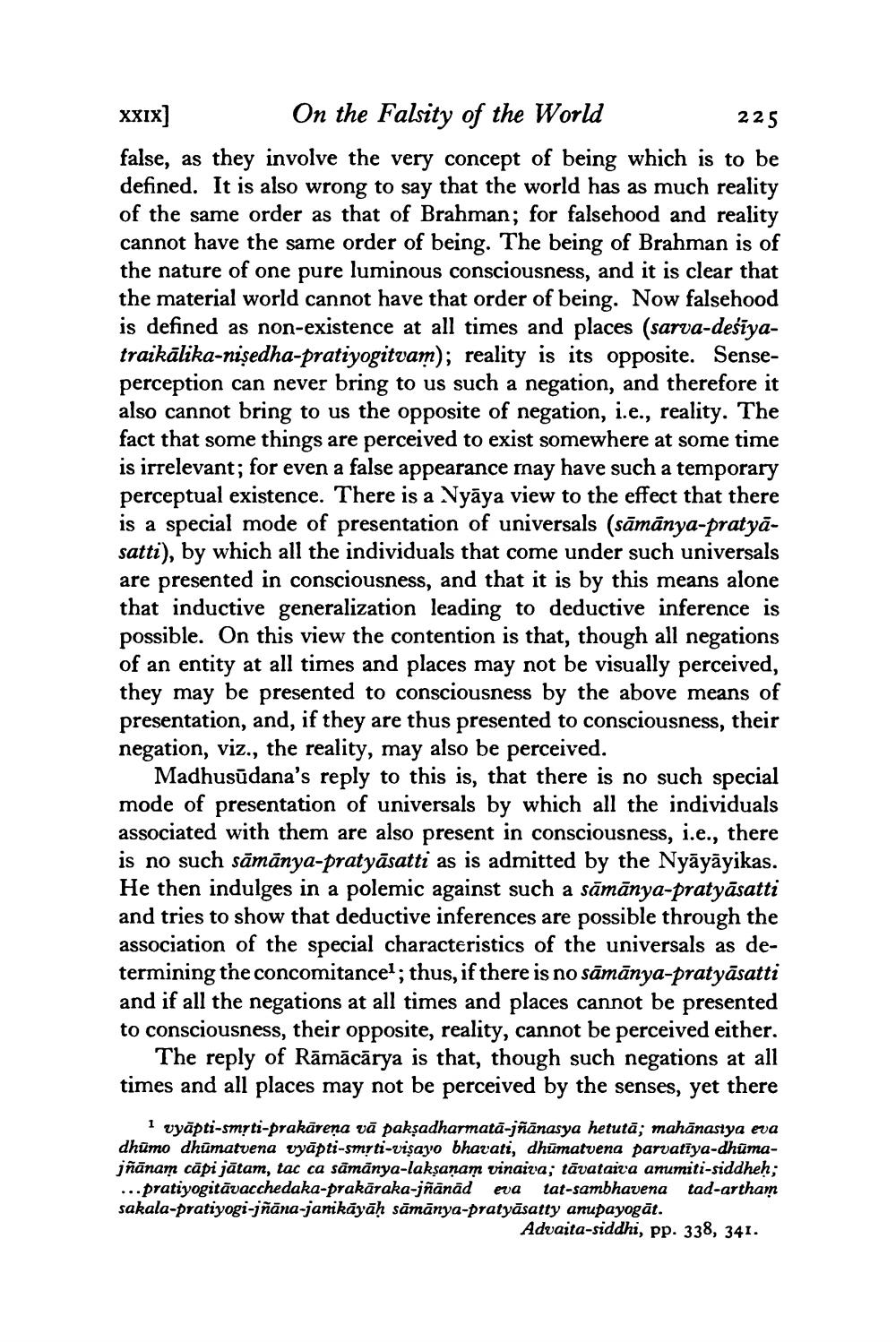________________
XXIX] On the Falsity of the World
225 false, as they involve the very concept of being which is to be defined. It is also wrong to say that the world has as much reality of the same order as that of Brahman; for falsehood and reality cannot have the same order of being. The being of Brahman is of the nature of one pure luminous consciousness, and it is clear that the material world cannot have that order of being. Now falsehood is defined as non-existence at all times and places (sarva-desīyatraikālika-nişedha-pratiyogitvam); reality is its opposite. Senseperception can never bring to us such a negation, and therefore it also cannot bring to us the opposite of negation, i.e., reality. The fact that some things are perceived to exist somewhere at some time is irrelevant; for even a false appearance may have such a temporary perceptual existence. There is a Nyāya view to the effect that there is a special mode of presentation of universals (sāmānya-pratyāsatti), by which all the individuals that come under such universals are presented in consciousness, and that it is by this means alone that inductive generalization leading to deductive inference is possible. On this view the contention is that, though all negations of an entity at all times and places may not be visually perceived, they may be presented to consciousness by the above means of presentation, and, if they are thus presented to consciousness, their negation, viz., the reality, may also be perceived.
Madhusūdana's reply to this is, that there is no such special mode of presentation of universals by which all the individuals associated with them are also present in consciousness, i.e., there is no such sāmānya-pratyāsatti as is admitted by the Nyāyāyikas. He then indulges in a polemic against such a sāmānya-pratyāsatti and tries to show that deductive inferences are possible through the association of the special characteristics of the universals as determining the concomitancel; thus, if there is no sāmānya-pratyāsatti and if all the negations at all times and places cannot be presented to consciousness, their opposite, reality, cannot be perceived either.
The reply of Rāmācārya is that, though such negations at all times and all places may not be perceived by the senses, yet there
1 vyāpti-smrti-prakārena vā pakşadharmatā-jñānasya hetuta; mahānasiya eva dhūmo dhūmatuena vyāpti-smrti-visayo bhavati, dhūmatvena parvatīya-dhūmajñānam cäpi jātam, tac ca sămânya-laksanam vinaiva, tāvataiva amimiti-siddheh; ... pratiyogitāvacchedaka-prakāraka-jñānād eva tat-sambhavena tad-arthamn sakala-pratiyogi-jñāna-jamikāyāḥ sāmānya-pratyāsatty amupayogāt.
Advaita-siddhi, pp. 338, 341.




